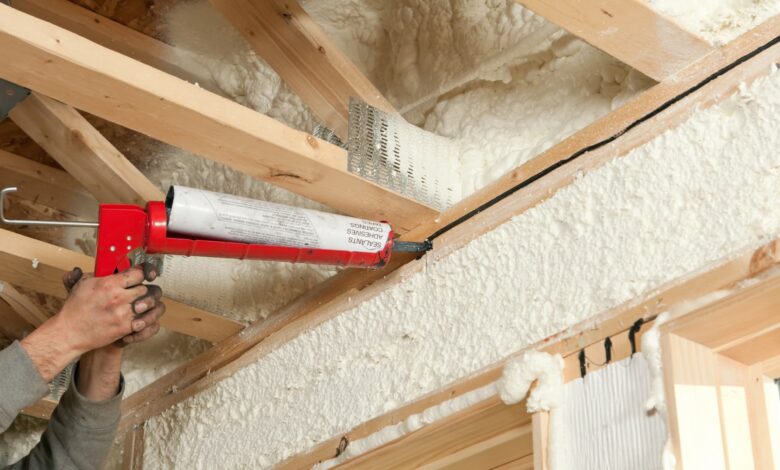This homeowner cut her heating bill in half — and got a $1,200 tax credit

As energy costs continue to rise, more homeowners are turning to energy-efficient upgrades to reduce their utility bills. Megan Moritz, a homeowner in Arlington Heights, Illinois, took the plunge and invested in energy-efficient improvements for her 1930s home, resulting in significant savings on her heating bill.
Moritz’s decision to add insulation and seal gaps in her ductwork paid off, with her gas heating bill dropping by half or more during the winter months. Her home is now cozy and warm, and she was pleased to see her monthly bills decrease substantially. In addition to the savings on her utility bills, Moritz also received a $1,200 federal tax credit for her energy-efficient upgrades.
The tax credit Moritz received is known as the energy-efficient home improvement credit, or the 25C credit, which is worth up to 30% of the cost of qualifying projects. Taxpayers can claim up to $3,200 per year on their tax returns for projects like installing heat pumps, biomass stoves, efficient windows and doors, insulation, and air sealing. In 2023, about 2.3 million taxpayers claimed the credit, with the average family receiving around $880.
Blair Kennedy, a homeowner in Severna Park, Maryland, also plans to claim the tax credit for his recent energy-efficient upgrades. Kennedy had fiberglass insulation installed in his attic and air-sealed his home, reducing his net cost for the projects with the tax credit. Without the tax credit, Kennedy admits that the decision to invest in energy-efficient upgrades would have been much harder.
The tax break has a long history, dating back to the Federal Energy Tax Act of 1978, and has been used on-and-off to encourage energy efficiency in homes. The current iteration of the tax break was extended through 2032 as part of the Inflation Reduction Act signed by President Joe Biden in 2022. The goal of the tax break is to reduce greenhouse gas emissions and combat climate change by incentivizing homeowners to make energy-efficient improvements.
However, the future of the tax break is uncertain, as Republicans in Congress have signaled their intent to eliminate it as part of a multi-trillion-dollar tax cut package. While some lawmakers are advocating for preserving the tax breaks for energy-efficient upgrades, there is a real risk that they could be eliminated in the near future.
For homeowners like Moritz and Kennedy, the tax credit has been a valuable incentive to invest in energy-efficient upgrades that not only save money but also benefit the environment. As discussions continue in Congress about the fate of the tax break, homeowners may need to act quickly to take advantage of this valuable opportunity to improve their homes and reduce their energy costs. The future of clean-energy incentives hangs in the balance as Congress debates the fate of tax breaks that support energy-efficiency projects. With slim margins in each chamber, their support could be the deciding factor in whether these incentives are saved or eliminated.
A recent study by E2 revealed that about 85% of clean-energy investments and 68% of jobs tied to the Inflation Reduction Act funding are located in Republican congressional districts. This highlights the bipartisan nature of clean-energy initiatives and the importance of maintaining support across party lines.
Despite the uncertainty surrounding the tax breaks, many households are still likely to undergo energy-efficiency projects. According to experts, savings on utility bills are often a primary motivation for these investments. With a typical return on investment of five to ten years based on monthly energy savings, the benefits of these projects are clear.
For homeowners like Kennedy, whose high energy bills prompted him to invest in energy efficiency, the tax breaks serve as an added incentive. By undergoing an energy audit and making improvements to his Maryland home, Kennedy hopes to save at least 15% on his monthly energy bills. The tax credit for the audit was just the “icing on the cake” for him.
Similarly, for Moritz, who invested in retrofitting her Chicago area home, the tax credit played a significant role in her decision-making process. She is committed to making her home more energy-efficient and is willing to make the necessary investments to ensure its longevity.
As Congress deliberates the future of clean-energy incentives, it is crucial to consider the impact on homeowners and businesses across the country. The potential savings and environmental benefits of these projects are significant, and maintaining support for tax breaks can help incentivize more people to invest in energy efficiency.
In conclusion, the continuation of tax breaks for clean-energy projects is essential for promoting sustainable practices and reducing energy consumption. By supporting these incentives, Congress can help create a more environmentally friendly future for all.





